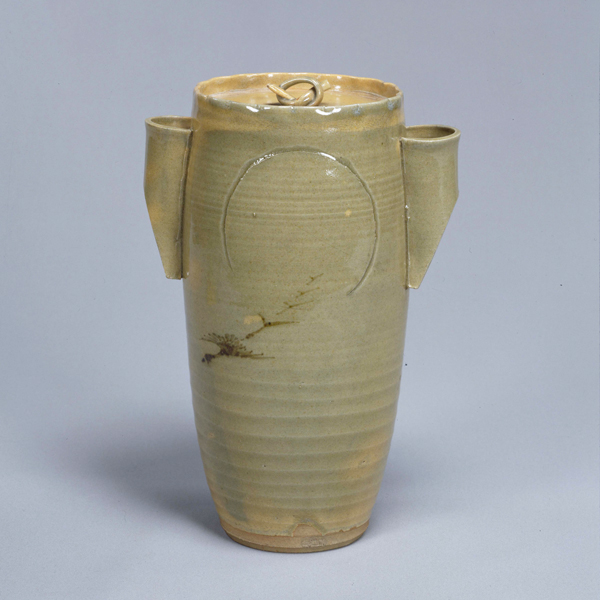茶の美術
-

銹絵月雁図水指
虫明 江戸~明治時代・19世紀本館 4室
2023年8月8日(火) ~ 2023年10月29日(日)日本の伝統文化を代表する茶の湯のなかで生まれた美術を紹介します。今回の展示は、月に関するものを中心に、初秋から名残の風炉の季節にあわせた道具を取り合わせます。
| 指定 | 名称 | 員数 | 作者・出土・伝来 | 時代・年代世紀 | 所蔵者・寄贈者・列品番号 | 備考 | |
| おすすめ | 志野茶碗 銘 振袖 | 1口 | 美濃 | 安土桃山~江戸時代・16~17世紀 | G-5749 | ||
| 野溝釜 | 1口 | 京釜 | 江戸時代・17世紀 | 野溝久米生氏寄贈 E-19565 | |||
| 銹絵月雁図水指 | 1合 | 虫明 | 江戸~明治時代・19世紀 | G-921 | |||
| 竹蓋置 | 1個 | 灰屋紹益作 | 江戸時代・17世紀 | 広田松繁氏寄贈 G-5384 | |||
| 古染付一閑人火入 | 1口 | 中国・景徳鎮窯 | 明時代・17世紀 | 広田松繁氏寄贈 TG-2573 | |||
| 南京赤絵周茂叔愛蓮図火入 | 1口 | 中国・景徳鎮窯 | 明時代・17世紀 | 広田松繁氏寄贈 TG-2598 | |||
| おすすめ | 黒釉文琳茶入 銘 望月 | 1口 | 薩摩 | 江戸時代・17世紀 | 松永安左エ門氏寄贈 G-4821 | ||
| 竹茶杓 銘 稲羽州サマ | 1本 | 片桐石州作 | 江戸時代・17世紀 | 松永安左エ門氏寄贈 G-4840 | |||
| おすすめ | 大井戸茶碗 佐野井戸 | 1口 | 朝鮮 | 朝鮮時代・16世紀 | 広田松繁氏寄贈 TG-2707 | ||
| 重美 | 和歌懐紙 | 1幅 | 西園寺実兼筆 | 鎌倉時代・13世紀 | B-2979 | ~2023年9月18日 | |
| 高光集切 | 1幅 | 伝藤原為家筆 | 鎌倉時代・13世紀 | B-1387 | 2023年9月20日~ | ||
| おすすめ | 古銅象耳花入 銘 秋月 | 1口 | 室町時代・15~16世紀 | 松永安左エ門氏寄贈 E-20187 | |||
| 志野草文向付 | 5口 | 美濃 | 安土桃山~江戸時代・16~17世紀 | G-5847 | |||
| 呉州赤絵牡丹双龍文大皿 | 1枚 | 中国・漳州窯 加賀田勘一郎氏旧蔵 | 明時代・17世紀 | 個人蔵 | |||
| 緋襷平鉢 | 1口 | 備前 | 安土桃山~江戸時代・16~17世紀 | 個人蔵 | |||
| 徳利 | 1口 | 備前 | 安土桃山~江戸時代・16~17世紀 | 松永安左エ門氏寄贈 G-4822 | |||
| 灰釉酒呑 | 1口 | 唐津 | 江戸時代・17世紀 | 広田松繁氏寄贈 G-5331 | |||
| 黄瀬戸酒呑 | 1口 | 美濃 | 安土桃山時代・16世紀 | 広田松繁氏寄贈 G-5313 |
